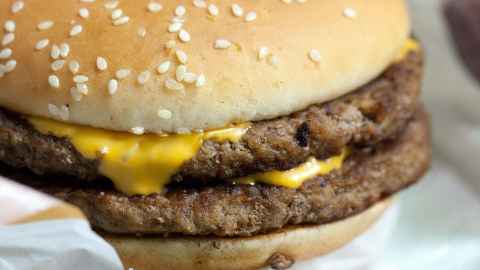Would you like a health problem with that? Fast-food combos
6 December 2021
No-one expects fast-food combo meals to be healthy eating, but just how bad do they get?

Nutrition experts at the University of Auckland’s School of Population Health carried out this country’s first detailed research into combos, analysing serving size and nutrition information from 20 chains. Kilojoules (calories), sodium (salt), sugar, and saturated fat content were compared to daily recommended intakes.
One of the least healthy combos (a double burger, dessert, fries and a sugary soft drink) included 16 teaspoons of sugar, along with more calories than an average person needs for an entire day, with a similar excess of salt. The researchers aren’t naming the fast-food chain to avoid singling out one company.
“Even when you’re going for the convenience of a combo meal, your exact choice can make a big difference for your health,” said lead researcher, Dr Sally Mackay. “Go for smaller portions, skip the dessert, and choose a low-sugar drink, and you’ll see the benefit for your wallet as well as your body.”
To help consumers make healthier choices, fast food chains need to provide more nutrition information at the point of purchase, and cut portion sizes, said Dr Mackay. Items high in calories, salt or sugar could carry a warning symbol on the menu board (such as a salt shaker for high salt levels, for example).
In this country, two in three adults are obese or overweight, along with three in 10 children. High salt intake can contribute to high blood pressure and stroke.
- The study, published recently in the journal Nutrients, found:
- Burgers ranged in size from as small as 101 grams to as large as 718 grams.
- Smoothies, often viewed by consumers as healthy, came as large as 600 millilitres and could be high in calories and sugar. Two of the smoothies each provided 40 percent of a person’s daily calories.
- Some fast food chains had no nutrition information available either online or in store
- Many products exceeded UK targets for levels of salt (which were used for comparison because Aotearoa New Zealand lacks such targets).
The example above of a “least-healthy” combo had more than three times the calories, over twice the salt, and thirteen times the sugar of a combo meal consisting of a cheeseburger, small fries and a no-sugar soft drink.
Tools to encourage healthier eating could include government-set targets for calories and salt in fast foods, and menu board labelling, which is currently under consideration by policy makers.
Dr Mackay said it was disappointing that most takeaway chains failed to provide nutrition information for most products, and some failed to provide any information.
The 20 fast-food chains whose meals were analysed were: Burger Fuel, Burger King, Burger Wisconsin, Domino’s Pizza, Hell Pizza, Jester’s Pies, KFC, McDonald’s, McCafé, Muffin Break, Noodle Canteen, Pita Pit, Pizza Hut, St Pierre’s Sushi, Subway, Tank Juice, Wendy’s, Wild Bean Café, Wishbone, Z Express. The seven chains that failed to provide nutritional information were: Nando’s, Night ‘n Day@Gull, Sal’s Pizza, Shake Shed and Co, Shamiana, Starbucks and The Coffee Club.
The study was based on data collected in-store and from company websites from February to March 2020.
The study was supported by the National Health and Medical Research Council and used information from Nutritrack, which is funded by the Health Research Council.
Energy in food is measured in calories or kilojoules. One calorie amounts to 4.2 kilojoules.
Media contact
Paul Panckhurst | media adviser
M: 022 032 8475
E: paul.panckhurst@auckland.ac.nz